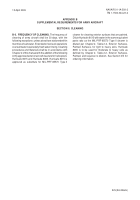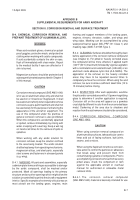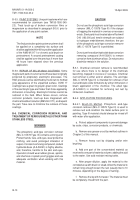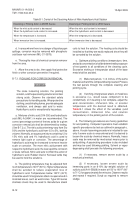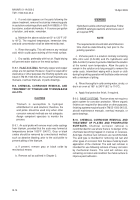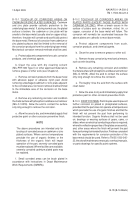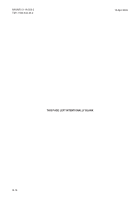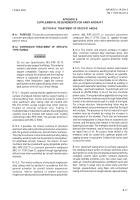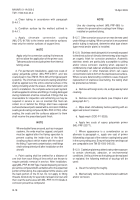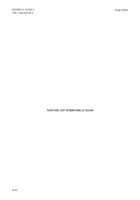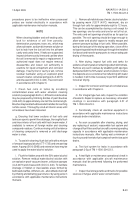TM-1-1500-344-23-2 - Page 217 of 240
NAVAIR 01-1A-509-2
TM 1-1500-344-23-2
15 April 2009
B-10.1. TOUCH-UP OF CORRODED AREAS ON
CADMIUM OR ZINC PLATED SURFACES. Cadmium
and zinc plate provide cathodic protection to the
underlying base metal. If, during normal use, the plated
surface is broken, the cadmium or zinc plate will be
anodic to the base metal (usually steel or copper alloy):
therefore, the plate will corrode and sacrificially protect
the base metal. Removal of corrosion from cadmium or
zinc plated surfaces shall be limited to the removal of
the corrosion products from the underlying base metal.
Mechanical corrosion removal methods shall be used.
a. Protect adjacent components for scale, corrosion
products, and chemical agents.
b. Clean the area with dry cleaning solvent
(MIL-PRF-680 Type II) or other approved materials to
remove grease or other soils (see Chapter 2).
c. Remove corrosion products from the base metal
with abrasive paper or abrasive nylon pad. Avoid
removing undamaged cadmium or zinc plate adjacent
to the corroded area. Corrosion removal shall be limited
to the immediate area of the corrosion on the base
metal.
d. Remove any remaining corrosion and condition
the metal surface with phosphoric acid base rust remover
(MIL-C-10578). Allow the acid to contact the surface
only long enough to remove the corrosion.
e. Allow the area to dry, and immediately apply final
protective paint or other corrosion preventive finish.
NOTE
The above procedures are intended only for
touchup of corroded areas on cadmium or zinc
plated surfaces. Where service temperatures
preclude the use of organic finishes or the
thickness of the organic finish will impair
operation of the part, severely corroded parts
must be replaced. Where facilities are available,
severely corroded cadmium plated parts may
be replated.
f. Small corroded areas can be brush plated in
accordance with instructions in Depot Maintenance
Work Requirements (DMWRs).
B-10.2. TOUCH-UP OF CORRODED AREAS ON
PLATED PARTS (EXCEPT THOSE PLATED WITH
CADMIUM OR ZINC). When a break occurs in the
surface of plates such as chromium, nickel, tin, or
copper, corrosion of the base metal will follow. The
corrosion will normally be accelerated because the
above plates are cathodic to most base metals.
a. Protect adjacent components from scale,
corrosion products, and chemical agents.
b. Clean the area to remove grease or other soil.
c. Remove heavy corrosion by mechanical means,
such as wire brushing.
d. Remove any remaining corrosion and condition
the metal surface with phosphoric acid base rust remover
(MIL-G-10578). Allow the acid to contact the surface
only long enough to remove the corrosion.
e. Thoroughly rinse the acid from the surface with
clean water.
f. Allow the area to dry and immediately apply final
protective paint or other corrosion preventive finish.
B-10.3. PAINT SYSTEMS. Paint may be used to prevent
further corrosion on plated or phosphated surfaces,
provided that the part does not operate at temperatures
which preclude the use of organic finishes and that the
finish will not prevent the part from performing its
intended function. Organic finishes shall not be used
on: bearings or wearing surfaces of gears, cams, or
slides; where an electrical conducting surface is required;
where the reflective properties of the plates are essential,
and, other areas where the finish will prevent the part
from performing its intended function. Finishes consistent
with the requirements for corrosion protection of the
base metal should be used. Refer to TM 55 1500-345-
23, the aircraft maintenance manuals, overhaul manuals,
or parts drawings for specific paint systems.
B-15/(B-16 Blank)
Back to Top

